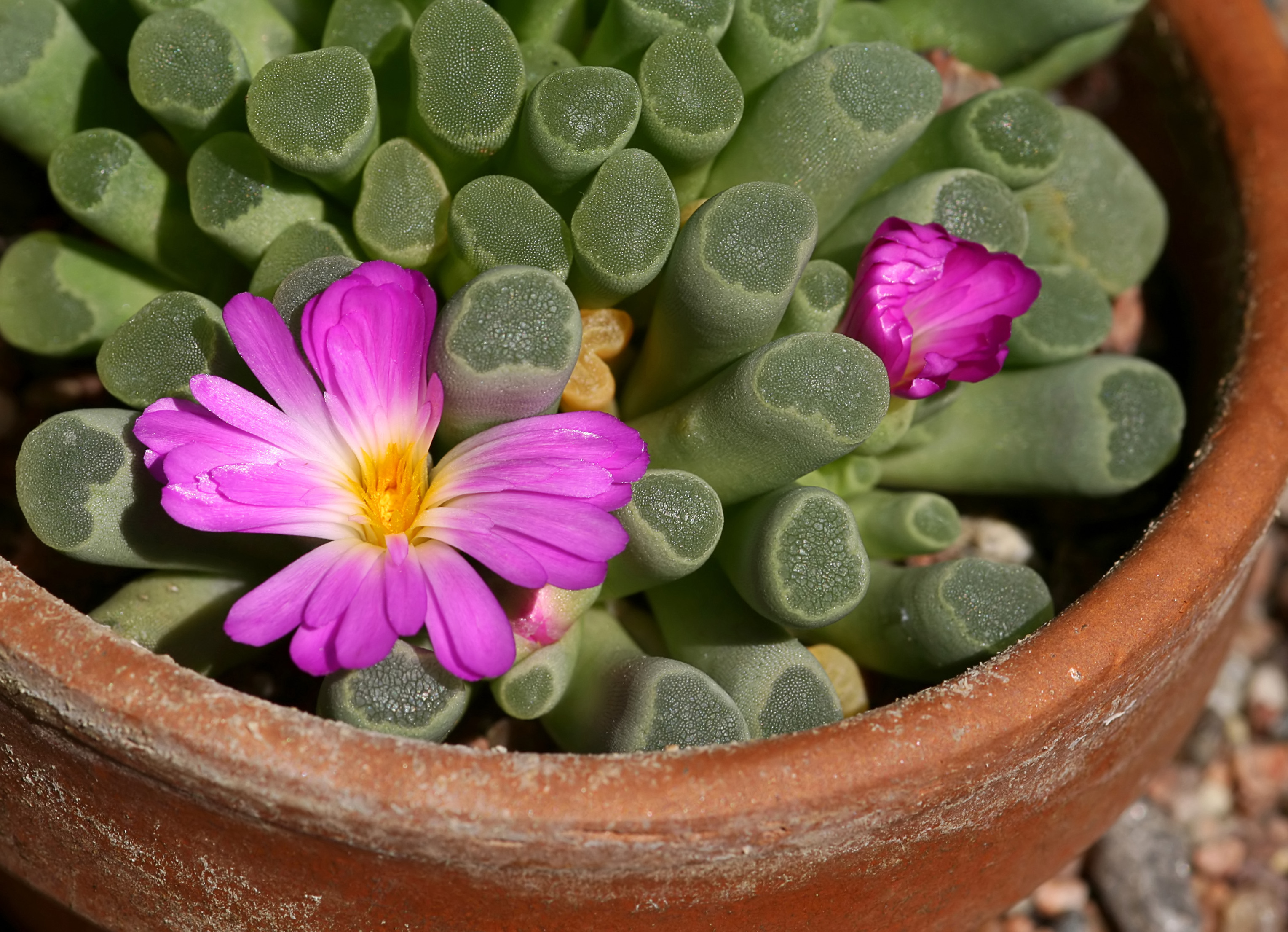Frithia pulchra
(Frithia pulchra)

Description
Frithia pulchra, fairy elephant's feet, is a species of flowering plant in the fig‑marigold family Aizoaceae, endemic to Gauteng Province, South Africa (where it is classified as “Vulnerable” by the IUCN Red List). Its natural habitat is temperate grassland with high summer rainfall. A tiny stemless succulent growing to just 10 cm (3.9 in) tall and 20 cm (7.9 in) broad, it has bulbous oblong leaves with leaf windows at the tip; and magenta and white daisy-like flowers in winter. During periods of drought it has the ability to shrink beneath the soil surface, thus avoiding excessive desiccation, but making it extremely difficult to find. It is named for Frank Frith, a Johannesburg gardener who showed specimens to N.E. Brown, a botanist at Kew Gardens, while on a visit to London, UK, in 1925.The Latin specific epithet pulchra means “beautiful”. It does not survive frosts, so in temperate areas it needs to be cultivated under glass. In the UK it has gained the Royal Horticultural Society’s Award of Garden Merit. Frithia is a genus of succulent plants in the family Aizoaceae, indigenous to several small rocky areas in the vicinity of Gauteng Province, South Africa. Like several of its close relatives (e.g. Fenestraria) and other plants in its ecotype (e.g. some species of Haworthia and Bulbine) it has epidermal windows (translucent areas in its leaves) as an adaptation to the difficulties of photosynthesis in its arid environment. Frithia are summer-growing species, as their natural habitat lies in a summer-rainfall region. They grow in very well-drained, sandy soil, with repetitive light watering in summer and a dry environment in winter.
Taxonomic tree:







